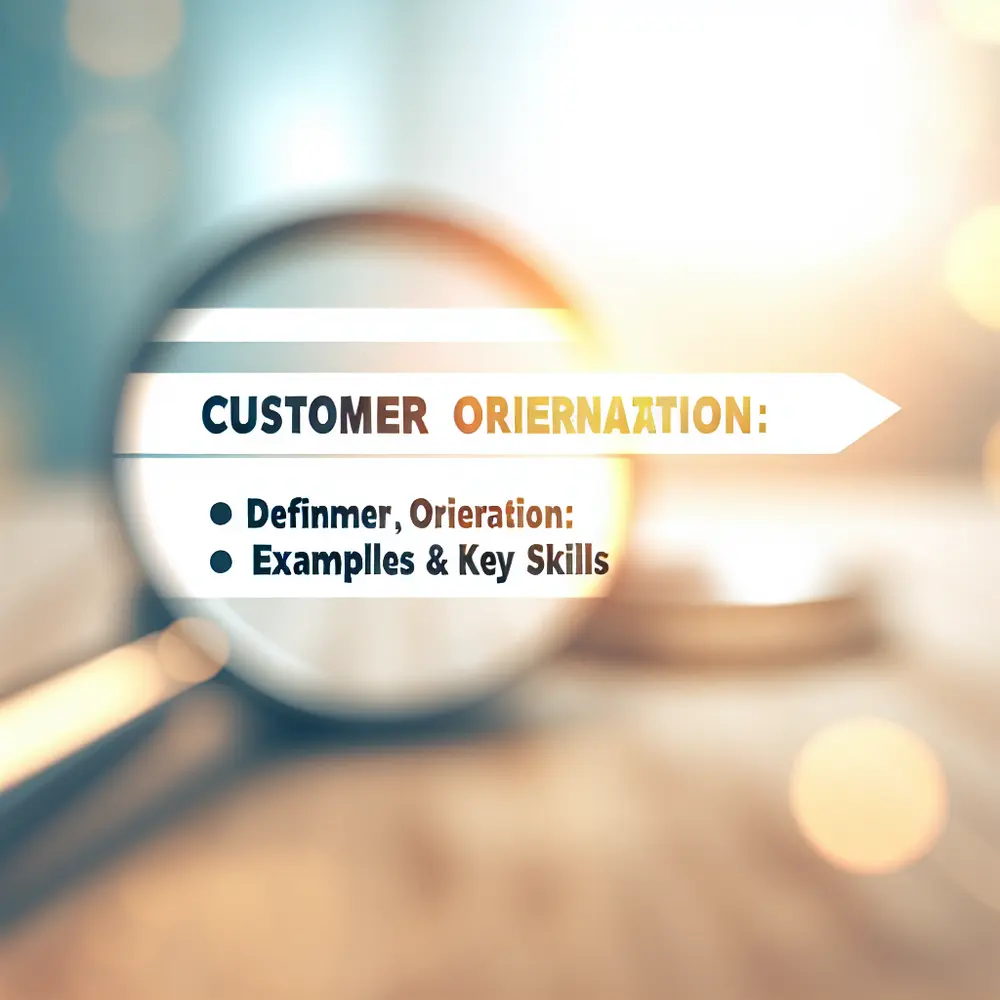Are you striving to create a business that truly resonates with your customers? Understanding customer orientation is essential for fostering loyalty, enhancing satisfaction, and driving sustainable growth. This article delves into the intricacies of customer orientation, exploring its definition, benefits, and how companies can successfully integrate it into their business strategies.
In today’s competitive landscape, merely meeting customer needs is not enough. You must anticipate their preferences and adapt your offerings accordingly. By adopting a customer-centric philosophy, you position your business to not only survive but thrive in an ever-evolving market. This means embedding customer feedback into your decision-making processes and prioritizing ongoing communication with your clientele.
Join us as we explore the significance of customer orientation and examine real-world applications, actionable strategies, and essential skills needed to foster a culture devoted to the customer experience.
Understanding Customer Orientation: A Comprehensive Definition
Customer orientation refers to a business approach that prioritizes understanding and addressing customer needs above all else. By doing this, you create a sustainable and competitive business environment. Companies like Jardins da Terra exemplify this philosophy by fostering long-term relationships based on trust and satisfaction, leading to enhanced loyalty and improved brand reputation.
In your customer-centric organization, the focus must extend beyond mere transactions. You need to embed service skills into your operations and integrate customer feedback into your business strategies. This holistic approach allows you to tailor products and services to meet specific customer preferences, increasing engagement and reducing churn rates.
Key skills for fostering customer orientation involve active listening, empathy, and communication. Consider a scenario where Clínica Vida Nova trained their customer service agents in these skills. As a result, they reported a 30% increase in client satisfaction, showing how vital it is for agents to master these competencies.
Moreover, implementing customer-oriented strategies can significantly impact your overall business strategy. When you align your operations with customer feedback, you can streamline processes, which enhances efficiency and effectiveness. This alignment facilitates innovation, helping you identify market opportunities and position your company as a leader.
Leveraging technology and data-driven insights enhances the customer experience. Tools like omnichannel platforms enable businesses to interact consistently with customers across various channels. For instance, after adopting such technologies, Loja Conecta saw a 25% improvement in customer satisfaction ratings, ensuring that customers received personalized service regardless of how they engaged with the brand.
The Importance of Being Customer-Centric in Business
Creating a customer-centric culture is vital for any business aiming to thrive in a competitive market. By prioritizing customers’ needs and preferences, you can formulate effective strategies that foster loyalty and repeated business. This approach not only enhances satisfaction but also leads to improved service skills among employees, crucial for navigating diverse customer interactions.
Take, for example, how EducaMais improved its strategies by aligning its business objectives with customer expectations. Leaders understood their clients’ pain points through feedback and developed tailored programming. This alignment promoted a culture of empathy and responsiveness, ensuring every employee prioritizes the customer experience.
Additionally, adopting a customer-oriented mindset positively impacts your bottom line. Engaging customers and soliciting feedback leads to identifying innovation areas that drive sales and cultivate a community of brand advocates. This word-of-mouth marketing amplifies your efforts organically.
Companies that invest in developing differentiated service skills see clear advantages over competitors. Training employees in active listening and thoughtful responses transforms ordinary interactions into meaningful connections. Companhia de Amparo reported a 40% reduction in complaint escalation after enhancing their team’s service skills. Check out our recommendations for the best customer service platform.
In conclusion, a commitment to customer orientation keeps businesses relevant and adaptable in an evolving marketplace. Embedding customer-centricity within your culture sets you on a path to sustained growth and success. Explore tools like an omnichannel support platform to streamline interactions and feedback collection effectively.
Examples of Customer Orientation in Action
Customer orientation can be observed in various contexts, illustrating how businesses prioritize their customers’ needs. In retail environments, for instance, staff at Supermercado Familiar undergo thorough customer service training. They emphasize listening to feedback, subsequently adjusting stock availability based on real-time insights, directly impacting sales positively.
In the tech industry, Apple showcases customer orientation through its exemplary post-purchase support. By offering resources like online tutorials and in-store assistance, they ensure customers maximize their product usage. Frequent software updates that enhance user experience demonstrate their proactive engagement, solidifying customer loyalty.
Hospitality also reflects customer orientation, particularly in hotels. Chains like Hotéis Requinte actively solicit guest feedback through surveys and personal interactions, implementing personalized welcome amenities based on guests’ previous stays. This tailored approach leads to increased satisfaction and repeat bookings.
Utilizing customer data analytics is another way companies demonstrate commitment to customer orientation. By analyzing purchasing patterns, online retailers like Compras de Casa tailor marketing efforts, resulting in higher conversion rates by sending personalized recommendations based on past purchases.
Ultimately, companies like Zappos highlight empowering employees to make customer-focused decisions. Their commitment to exceptional service allows staff to resolve issues beyond standard procedures, leading to greater customer satisfaction. By fostering a customer-centric culture, Zappos encourages loyalty and engagement.
Essential Service Skills for Enhancing Customer Orientation
Fostering customer orientation requires specific service skills crucial for both customer service agents and business leaders. Prioritizing these skills ensures organizations effectively meet customer needs and enhance satisfaction.
Active listening is foundational. By truly hearing customers’ concerns, organizations can tailor responses effectively. This builds trust and demonstrates commitment to the customer’s voice. Training teams at Consultoria Total on active listening resulted in a 30% improvement in customer feedback scores.
Empathy is another key skill that enhances customer orientation. By understanding customers’ emotions and motivations, service agents create personalized interactions that reinforce positive relationships. This genuine care cultivates loyalty and fosters deeper connections.
Problem-solving skills are essential for transforming challenges into opportunities. When customer issues arise, swift and effective solutions are paramount. Organizations that encourage creative thinking see transformative results; like Serviço Ágil, which reported a 20% increase in resolution rates after training their agents.
Effective communication ensures messages resonate with customers. Clarity minimizes misunderstandings and fosters an environment where customers feel valued. Training programs emphasizing concise communication can significantly elevate the customer experience.
Lastly, adaptability is crucial in e-commerce and customer service. Teams must respond to changing customer needs swiftly. Encouraging continuous learning allows organizations to stay ahead of expectations while aligning with overarching business strategies.
Integrating Customer Orientation into Your Business Strategy
Integrating customer orientation into your business strategy is vital for developing a robust approach. By prioritizing customer-centric methods, you can enhance service skills and build lasting relationships that set your business apart.
Understanding customer preferences allows you to design resonant services and products. Engaging in continuous market research helps gather insights about behavior and pain points, ensuring strategies are grounded in relevance. For example, Papelaria Criativa thrives by regularly collecting customer feedback to inform product innovation.
Training customer service agents in effective service skills is crucial. Equipping your team to empathize and respond adeptly leads to more personalized experiences, enhancing loyalty. Role-playing can improve skills among agents, as demonstrated by Equipe Proativa, which saw their customer satisfaction increase by 35% after implementing such training.
Actively seeking customer feedback also helps refine strategies. Valuing input about experiences empowers your business to adapt proactively. This two-way communication ensures your services remain relevant and effective.
Communicating your commitment to customer orientation across the organization solidifies this approach. Establishing a culture valuing customer insights empowers every employee, fostering a unified commitment to enhancing customer experience.
Measuring the Effectiveness of Customer Orientation
Assessing customer orientation’s effectiveness is vital for aligning with customer expectations. Key performance indicators (KPIs) form a robust framework for measurement.
Customer satisfaction scores (CSAT) gauge how well your business meets expectations. Regular surveys provide insights into customer experience, allowing you to identify areas for improvement. After implementing CSAT measures, Universo Limpo saw a 25% increase in repeat customers.
Net Promoter Score (NPS) assesses customer loyalty and willingness to recommend your product. High NPS scores reflect strong customer orientation and engagement. Tracking NPS over time reveals trends and the impact of customer-centric culture.
Customer retention rates offer valuable insights into effectiveness. Higher retention signifies appreciation for service and feelings of being valued. Employing behavioral analytics helps understand loyalty drivers and refine strategies accordingly.
Implementing feedback loops aids measurement as well. Actively seeking and acting on customer feedback signals commitment to improvement, ensuring responsiveness to emerging needs and preferences.
Challenges in Implementing Customer Orientation and How to Overcome Them
Implementing customer orientation presents challenges requiring effective navigation. One major hurdle is aligning your entire strategy with a customer-centric approach. Resistance to change often hampers innovation. Leaders should foster openness to embrace a customer-first mindset.
A lack of adequate service skills among employees is another obstacle. Insufficient training can lead to poor experiences. Investing in comprehensive training programs to focus on essential skills like active listening, empathy, and problem-solving is crucial for effective implementation.
Communication gaps between departments can hinder a customer-oriented approach. When teams work in silos, responding to feedback becomes difficult. Implementing strategies for cross-departmental communication ensures shared insights, empowering employees to contribute effectively.
Top management resistance can impede adopting customer-centric practices. Leaders may foresee changes as time-consuming. Demonstrating the ROI of customer orientation by correlating improved experiences with increased revenue can secure alignment with leadership goals.
Finally, measuring effectiveness can be daunting. Struggling to set relevant KPIs hampers progress. Utilizing modern analytics tools offering real-time feedback allows leaders to evaluate customer-centric efforts accurately. These insights enable continuous refinement, facilitating adaptability.
Conclusion: The Future of Customer Orientation in Business
Customer orientation will increasingly influence business strategy. As consumer preferences evolve, company survival hinges on embracing a customer-centric approach. Prioritizing customer needs not only enhances loyalty but also drives sustainable growth.
The next few years will see businesses integrating advanced technologies to strengthen customer orientation. AI, big data, and analytics will provide valuable insights into behavior and preferences, facilitating personalized experiences.
Furthermore, service skills remain vital for achieving satisfaction. Training empathy, communication, and problem-solving ensures meeting diverse expectations. Empowering agents to address issues promptly enhances retention rates.
Creating an omnichannel presence will also be essential for enhancing customer orientation. Delivering seamless experiences across multiple touchpoints allows effective engagement throughout customer journeys.
Finally, business leaders must continuously assess and adapt strategies. Monitoring trends, gathering feedback, and refining offerings will keep organizations aligned with customer expectations. Those prioritizing customer orientation will have distinct advantages in driving success and fostering lasting relationships.









